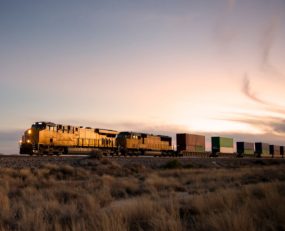
The newly published half-year results of Norfolk Southern Rail Corporation reflect the strength of demand and the tight market conditions in North America for owners of physical transport assets.
For the second quarter, Norfolk Southern, which is one of North America’s largest rail freight providers, saw profits in terms of net income rise by 23% whilst revenue was up by 7%. Volumes carried increased by 6% if measured by tonnage. The underlying demand picture is complex, with a major contributor to growth being coal which saw a 27% rise in tonnage carried. In contrast the number of cars moved was up only 1%. Intermodal traffic recovered with a year-on-year rise of 6% in terms of volume but a 10% rise in terms of revenue, indicating that the tightening in the road freight market continues to spill-over into rail.
CSX saw similar results last week, with both revenue and operating profit higher by 8% and 14% respectively in the second quarter. Overall tonnage was up by 2% but coal volumes leapt by 27%.
Canadian Pacific also saw higher revenues and profits, although its market also benefitted from increased agri-bulk traffic such as grains and potash. Revenue was 13% higher in the second quarter and net income was 46% higher.
The numbers illustrate the trend of owners of transport assets being able to increase both prices and utilisation. However, it is interesting to note that growth is not being driven directly by higher consumer demand as the muted figures in the automotive sector illustrate. Rather it is a shortage of capacity and higher prices in road freight combined with a recovery in bulk sectors such as coal and other commodities that is to be credited. This might suggest that there is a wider dynamic of ‘bounce-back’ in the marketplace that is amplifying the effects of the recovery specifically for rail freight, and this may moderate in the near future. That said, the rail freight sector does appear to have sustained a profitable balance between demand and supply.
Source Transport Intelligence, July 27, 2017
Author: Thomas Cullen